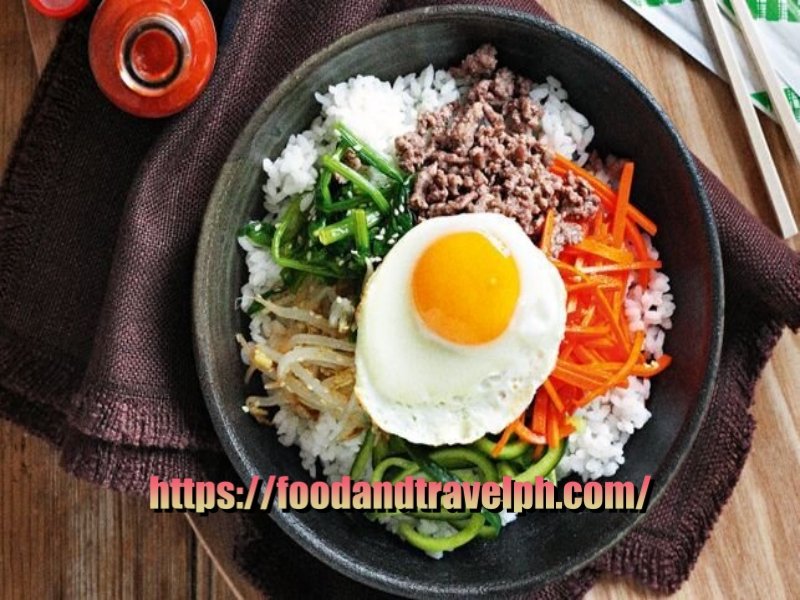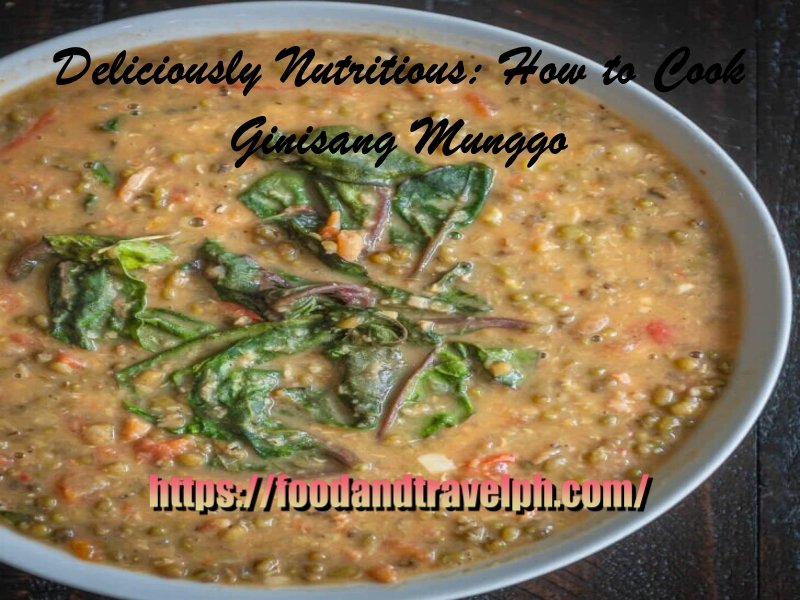Bibimbap

Bibimbap is a popular Korean dish that translate to “mixed rice”. It is a vibrant and nutritious meal composed of rice assorted vegetables, protein (such as beef, chicken, tofu), and a spicy gochujang sauce. The ingredients are typically arranged beautifully on top of the rice, and everything mixed together just before eating. Here’s a detailed guide on how to cook Bibimbap along with some information, reviews and ingredients.
Ingredients
- Rice
- 2 cups of short-grain white rice or brown rice, cooked
- Vegetables
- 1piece carrot cut into thin strips
- 1piece zucchini cut into thin strips
- 1cup of bean sprouts blanched
- 4-5pieces shiitake mushrooms sliced
- 1 piece cucumber cut into thin strips
- 1 pound spinach
- Optional : bell peppers, radish, or any other vegetables you prepare
- Protein
- 1piece egg
- 200g thinly sliced (you can substitute with chicken, pork, tofu or omit for a vegetarian version).
- Marinate for beef
- 2tablespoons soy sauce
- 1tablespoon sesame oil
- 1tablespoon garlic minced
- 1tablespoon sugar
- 1teaspoon ground black pepper
- Gochujang Sauce
- 2tablespoons gochujang korean red chili paste
- 1tablespoon sesame oil
- 1tablespoon sugar
- 1teaspoon rice vinegar
- 1teaspoon garlic minced
- Garnishes
- 1tablespoon sesame seeds
- 2pieces onion chopped
- Sesame oilfor drizzling
Instructions
- Prepare the Rice
- Cook the rice according to package instructions.Set aside and keep warm.
- Maribate the Protein
- In a bowl, mix soy sauce, sesame oil, minced garlic, sugar and black ground pepper. Add the sliced beef and let it marinate for at least 20 minutes.
- Prepare the Vegetables
- Blanch the spinach and bean sprouts in boiling water for a minute, then rise under cold water and squeeze outthe excess water.
- Saute the carrots and zucchini in a little oil until they are tender but still crisp.
- Saute the shiitake mushrooms until they are tender.
- Arrange the vegetable in separate piles on a large plate.
- Cook Protein
- Heat a pan over medium-high heat and cook the maribated beef until it is fully cooked. Set aside.
- Prepare the Gochujang Sauce
- In a small bowl, mix gochujang, sesame oil, sugar, water, rice vinegar, and minced garlic until smoooth.
- Fry the Egg
- In the same pan. fry one eggper serving, sunny side up or to your preference.
- Assemble the Bibimbap
- In a large bowl. place a serving of warm rice at the bottom.
- Arrange the cooked vegetables, protein, and cucumer on the top of the rice in sections.
- place the fried egg in the center
- Drizzle with the sesame oil and sprinkle with sesame seed and onions.
- Serve with the gochujang sauce on the side or drizzled on top.
- miax and Enjoy
- Just before eating, mix everything together thoroughly to combine the flavors and textures. Enjoy.

Reviews and Information
- Taste and Texture
- Bibimbap is celebrated for its delightful mix of flavors and textures. The combination of crunchy vegetables, savory meat, chewy rice and the spicy, tangy gochujang sauce creates a harmonious balance that is both satisfying and exciting to the palate.
- Nutritional Value
- This dish is higly nutritious, offering a good balance of carbohydrates, proteins, and fats. The variety of vegetables ensures a rich intake of vitamins, minerals, and fiber making it wholesome meal option.
- Versatility
- Bibimbap is incredibly versatile and can be customized to suit individual preferences and dietary restrictions. You can easily make it vegetarian or vegan by omitting the meat and egg, and adding more vegetables or tofu.
- Cultural Significance
- bibimbap is a traditional Korean dish that is often enjoyed during celebrations and communal meals. It is a representation of the Korean philosophy of harmony and balance, both in flavor and nutrition.
- Popularity
- This dish has gained international popularity and is well-loved by people of all ages. Many reviews highlight its delicious taste, ease of preparation and the joy of mixing and eating it.
Whether you’re a seasoned cook a beginner, Bibimbao is a fantastic dish to try at home. Its vibrant presentation and rich flavors are sure to impress and satisfy. And i know you will love it when you make it in your home. You will not regret the cost because in addition to being healthy Bibimbap is very tasty.
Yukgaejang: The Ultimate Korean Spicy Beef Soup Recipe
How to cook Yukgaejang Yukgaejang is a vibrant and flavorful Korean beef soup known for its rich, sp…
A Guide to Making Delicious Ojingeo-Bokkeum (Spicy stir fried squid)
Ojingeo-Bokkeum (Spicy stir fried squid) Recipe Ojingeo-Bokkeum (Spicy stir fried squid), a fiery an…
Coconut Bliss: The Magic of Adobong Manok sa Gata
Adobong Manok sa Gata Recipe Adobong Manok sa Gata is a Filipino dish that beautifully marries the c…
Savor the Flavors of the Philippines: A Guide to Cooking Chicken Afritada
How to cook Chicken Afritada Chicken Afritada is a popular Filipino dish that features chicken piece…
Deliciously Nutritious: How to Cook Ginisang Munggo
Munggo Recipe Ginisang Munggo is a popular Filipino dish made primarily from mung beans, often enjoy…
Exploring the World of Korean Banchan: 15 Must-Try Side Dishes
How to make Korean Banchan Korean cuisine is renowned for its rich flavors and diverse dishes, and o…










Leave a Reply